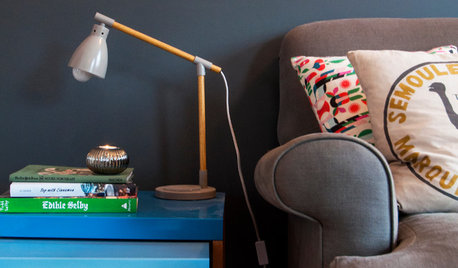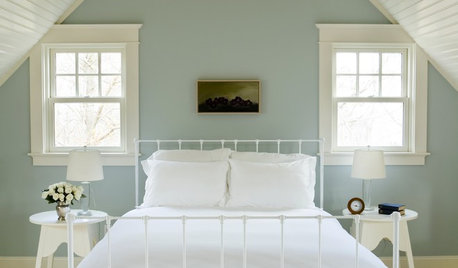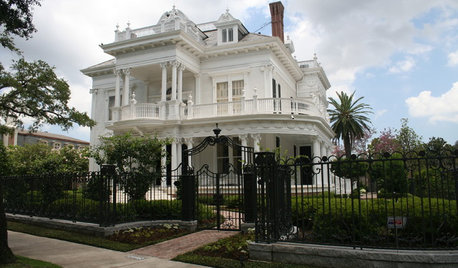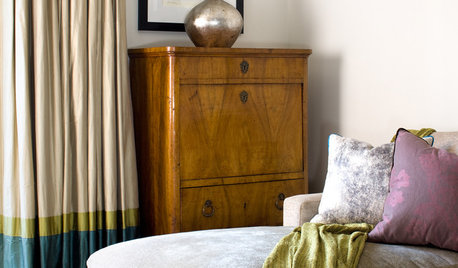Is this true?
leezen4u
12 years ago
Featured Answer
Sort by:Oldest
Comments (24)
michaelg
12 years agolast modified: 9 years agoflaurabunda
12 years agolast modified: 9 years agoRelated Discussions
fruits that are true to seed
Comments (10)Most fruit trees (at least the commercially grown types used for food) are cultivars. They are usually grafted or budded onto rootstock. Some fruit trees (like many types of apples) most often produce seedling offspring very different from themselves. Others (like most pawpaws) can produce seedling offspring fairly similar to the parent. I don't know of any fruit tree cultivar that would produce seedlings that would really be considered true to type, but the degree to which they are similar will vary from different types of fruit and will vary between varieties of the same fruit. Cultivars have unique characteristics or they wouldn't be cultivars. You give your zone as 6b, but you might want to provide more information about your location for better advice about fruit trees. Different parts of the country have very different growing conditions. The zone is important, but doesn't give the whole story....See MoreSalvia cultivars that come true/nearly true from seed?
Comments (2)Christin, FWIW I have grown Salvia 'Rose Sensation' from seed and it comes true. Have also grown Salvia 'Caradonna' from seed, but most of my plants didn't have the dark stems that differentiates it from other cultivars. It did have the nice dark flowers. regards,seedmoney...See MoreProvenzza - True North - Vinyl
Comments (4)All the pics in the world in other peoples houses will not help you for your house and next time you post a dilemma like this please keep it to one post . The best is to get a box of the one you like and bring it home and lay it out in your space with your stuff and your lighting....See MorePing Lim’s True Love
Comments (27)Looks like it could be a workhorse of a rose. Wish it had fragrance, but so many minis and minifloras are scentless, that doesn't surprise me. Interestingly, Ice Kordana, a Kordes mini rose is one of True Love's parents. The Kordana Series was developed by Kordes as gift mini roses that mostly were/are given as gifts and ended up tossed into the trash after they succumbed to indoor conditions. Just shows how complex rose genetics are in this modern age, after so many years of crossing and crossing and crossing some more, especially close relatives. Anything hidden in the genetics comes out to either the joy and wonderment of the rose world, or a Frankenstein horror, tossed into the compost, which is the fate of the vast majority of rose seedlings the breeders produce. I'm no bleeding heart for roses rights, just saying! 🤔 Moses...See Morehenry_kuska
12 years agolast modified: 9 years agoseil zone 6b MI
12 years agolast modified: 9 years agoroseseek
12 years agolast modified: 9 years agokittymoonbeam
12 years agolast modified: 9 years agoleezen4u
12 years agolast modified: 9 years agokstrong
12 years agolast modified: 9 years agoUser
12 years agolast modified: 9 years agomichaelg
12 years agolast modified: 9 years agoUser
12 years agolast modified: 9 years agoseil zone 6b MI
12 years agolast modified: 9 years agoharryshoe zone6 eastern Pennsylvania
12 years agolast modified: 9 years agokittymoonbeam
12 years agolast modified: 9 years agoseil zone 6b MI
12 years agolast modified: 9 years agoMaryl (Okla. Zone 7a)
12 years agolast modified: 9 years agorosesinny
12 years agolast modified: 9 years agoleezen4u
12 years agolast modified: 9 years agoAl Mitchell zone 5b (ameri2nal)
12 years agolast modified: 9 years agoharryshoe zone6 eastern Pennsylvania
12 years agolast modified: 9 years agoroseseek
12 years agolast modified: 9 years agolookin4you2xist
12 years agolast modified: 9 years agosandandsun
12 years agolast modified: 9 years ago
Related Stories

MOVING9 Things New Homeowners Know to Be True
Just moved into a new home? Congratulations! The fun is about to begin
Full Story
True Grit: Classic, Old-West Style Design
Design Eye on the Oscars: How to Bring a Little True Grit Home
Full Story
LIFE10 Things Night Owls Know to Be True
Love being up while the world slumbers? Prefer a really late bedtime to an early night? These observations on night owl life may ring true
Full Story
COLOR12 Tried-and-True Paint Colors for Your Walls
Discover one pro designer's time-tested favorite paint colors for kitchens, baths, bedrooms and more
Full Story
DECORATING GUIDESMy Houzz: Family Home Stays True to Style
A new mother creates a home that’s warm and welcoming for her daughter and yet still reflects her own taste
Full Story
MORE ROOMSTrue Blood: What If Sookie Stackhouse Just Moved Away?
More Security, Familiar Elements and Updated Decor for Sookie's New Home
Full Story
FUN HOUZZ31 True Tales of Remodeling Gone Wild
Drugs, sex, excess — the home design industry is rife with stories that will blow your mind, or at least leave you scratching your head
Full Story
SHOP HOUZZShop Houzz: True Blue Sofas
Turn a blue sofa into a design chameleon that goes with everything in your living space
Full Story0

HOUSEKEEPING10 Things Neat Freaks Know to Be True
Do you err on the incredibly tidy side? Then you probably already live by these nuggets of neat wisdom
Full Story
DECORATING GUIDESLearn When to Splurge for True Design Happiness
Sometimes treating yourself is exactly right — despite that whole impracticality thing
Full Story





roseseek